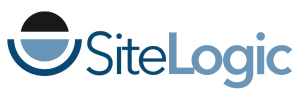Do you ever read an article about some research that stays with you for days, maybe weeks? That happened to me this month as two articles, seemingly unrelated, stayed with me throughout the Thanksgiving holiday.
Jacob Nielson and the Digital Divide
The first, by Jacob Nielson, discusses the current state of the digital divide. An interesting exposition of the state of the divide, which is not one of “have’s and have-not’s.” The cost of computers is coming down significantly. The cheapest new computer today is significantly less than the Apple Mac that I bought for college in 1988, and significantly more powerful. The goal of mass-producing a $100 laptop is about $50 short, but still a force in development. The economic divide has been closing quickly, but it won’t be the significant divide that we face.
The Usability Divide
The next divide that Nielson covers is two parts of a usability divide, that of the elderly and of low-literacy users. The elderly are the fastest growing population segment, and also have the most disposable income, yet very few sites are accommodating a senior audience in design or in accessibility. The low-literacy user is another significant part of the population. Nielson feels that this is the most significant usability problem on the web today; as he cites that almost 40% of the population has lower literacy skills.
The Empowerment Divide
His final divide is the empowerment divide. The ability of the user population to find the information they seek. There is a significant lack of understanding of search in the larger user community. There is a lack of understanding of how to use advanced search functions, query reformulation, and choose the top search results without discernment. This group of people is at the mercy of those who have the default browser, the ISP, or the top search results because of their lack of initiative or skill to critically evaluate the information placed in front of them. Typically, the lack of initiative is because of fear.
College Students and Critical Thinking
In a related article, the Educational Testing Service released a report (PDF) about the abilities of college students to do many of tasks that Nielsen discussed about the empowerment divide. There is a surprising reliance upon Google for information, and most college students do not have the skills or the initiative to find information, focus the information or critically evaluate it. Essentially, the majority of college students tested lack the ability to use technology to solve information problems. There were over 6,300 students tested from 63 different universities and colleges around the country.
The lack of the skills necessary will affect these students as they attempt to enter the workforce, but a similar problem exists there. Irvin Katz, a research scientist with ETS. “It’s not only in academics,” he said, “but also in the workplace that people don’t have the necessary critical skills to access information.”
Website Evaluation
Two tests were significant. In the first, students were asked to evaluate several Web sites based on objectivity, authority and timeliness. 52 percent correctly assessed the objectivity of the sites, 65 percent correctly judged for authority, and 72 percent for timeliness. However, only 49 percent correctly identified the site that satisfied all three criteria.
In the second test, students were given a broad search term to refine. Only 35% of the students correctly identified the correct query reformulation.
These two articles point to a significant problem that we will soon be facing. There is an increasing divide between the technical elite and the rest of the user population. Very few students are coming out of college equipped to handle the responsibilities and tasks that they will be asked to perform in the workplace. If a student is wishing to work in the technical realm, the divide will be difficult to overcome if that student does not have the initiative to learn.
What can we do?
I believe that there are a few contributors to this problem. The first is the education system. Rather than teaching students to think by instilling critical and logical thinking skills, we are teaching to the test. Teaching names, dates and places with no context as to why they are important and the resulting historical significance. We now have generations of youth that understand how to use the technology, but haven’t the slightest idea how it works. Instead they are content to be used by the technology, in the words of Neil Postman in his book, Technopoly.
The final contributor is one that is as old as mankind. We are an impatient bunch and we really like to have things handed to us. Having a search engine answer our every question and whim allows us to get what we want, when we want it. It can be very easy to let that satisfy, as it takes work and curiosity to want to know more, or even to know why.
Yes, I have a concern for the future. As the ecomic gap closes,the critical thinking gap only shows signs of widening.
